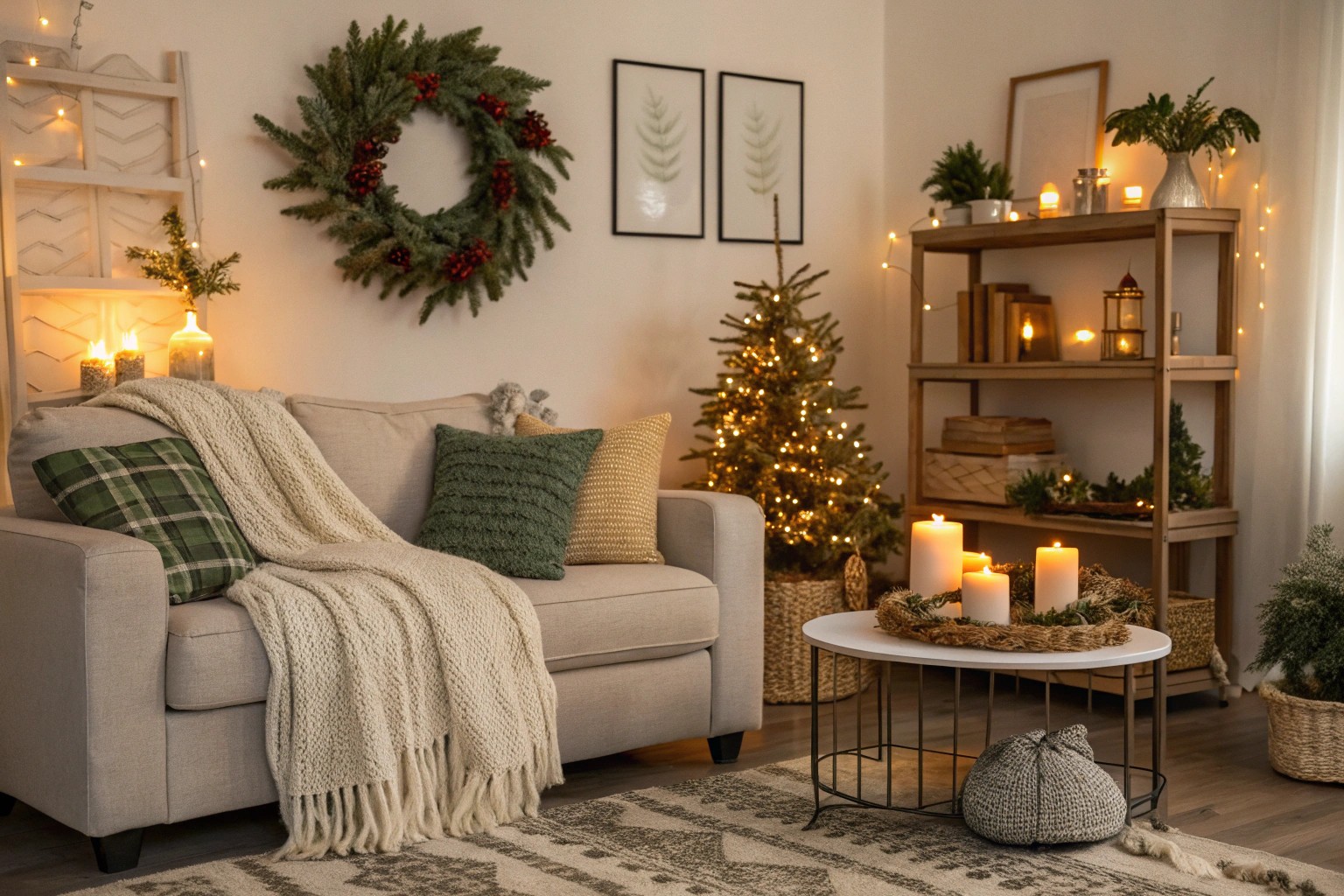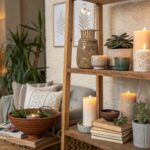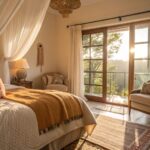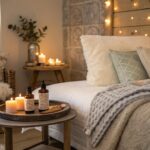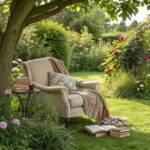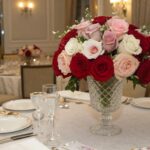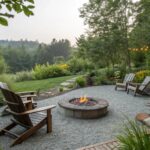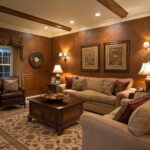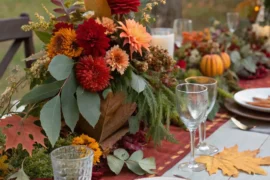As the seasons shift outside our windows, our living spaces deserve to evolve in harmony with nature. Through my years designing responsive environments, I’ve discovered that the smallest seasonal touches often create the most profound transformations. You don’t need complete overhauls four times a year—just thoughtful adjustments that honor each season’s unique character while creating spaces that feel both timely and deeply connected to the natural world.
Core Principles of Seasonal Design

The most effective seasonal design addresses five key elements:
- Color palettes that mirror nature’s changing canvas
- Textures and materials that provide appropriate comfort
- Lighting adjustments to complement shifting natural light
- Functional adaptations for seasonal activities
- Natural elements that bring the outdoors in
I once worked with a client who felt her beautifully furnished home seemed “disconnected” despite considerable investment. By simply adjusting these five elements seasonally, we transformed her space from merely attractive to deeply resonant. “It finally feels like home,” she told me, “like it’s breathing with the world outside.”
Winter: Creating Warmth and Comfort
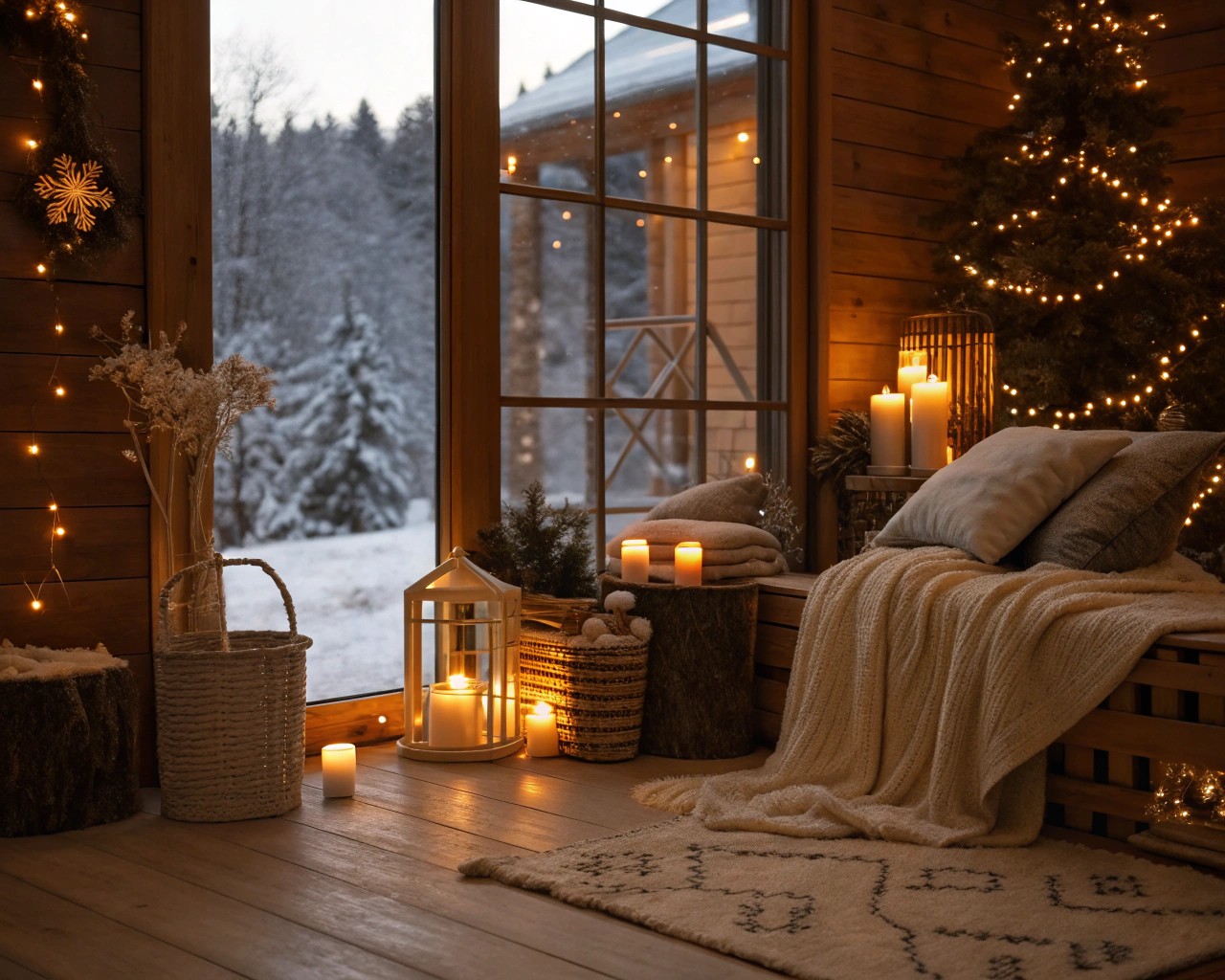
Winter calls for design elements that counter shorter days and colder temperatures with visual and physical warmth.
Color Palette
Winter’s palette draws from deep, rich tones that create visual warmth:
- Deep burgundies and forest greens
- Navy blues and charcoal grays
- Warm neutrals like terracotta and chocolate brown
Texture Layering
When temperatures drop, layering becomes essential for both aesthetic appeal and comfort:
- Incorporate velvet, faux fur, and chunky knit textiles
- Add plush rugs over cold floors for physical and visual warmth
- Display weighted throws strategically on furniture
Lighting for Ambiance
With fewer daylight hours, intentional lighting transforms the mood:
- Install dimmers on overhead fixtures
- Switch to warm-toned bulbs (2700K-3000K) to create a golden glow
- Incorporate candles and string lights for ambient warmth
Client Case: The Minnesota Transformation
A Minneapolis family transformed their living room simply by swapping summer’s lightweight cream curtains for heavier velvet drapes in deep navy. They added a faux fur throw and amber-glass table lamps. The client reported that the room immediately felt more insulated and cozy, leading them to spend evenings there instead of retreating to the basement as they previously had.
Spring: Refreshing and Renewing
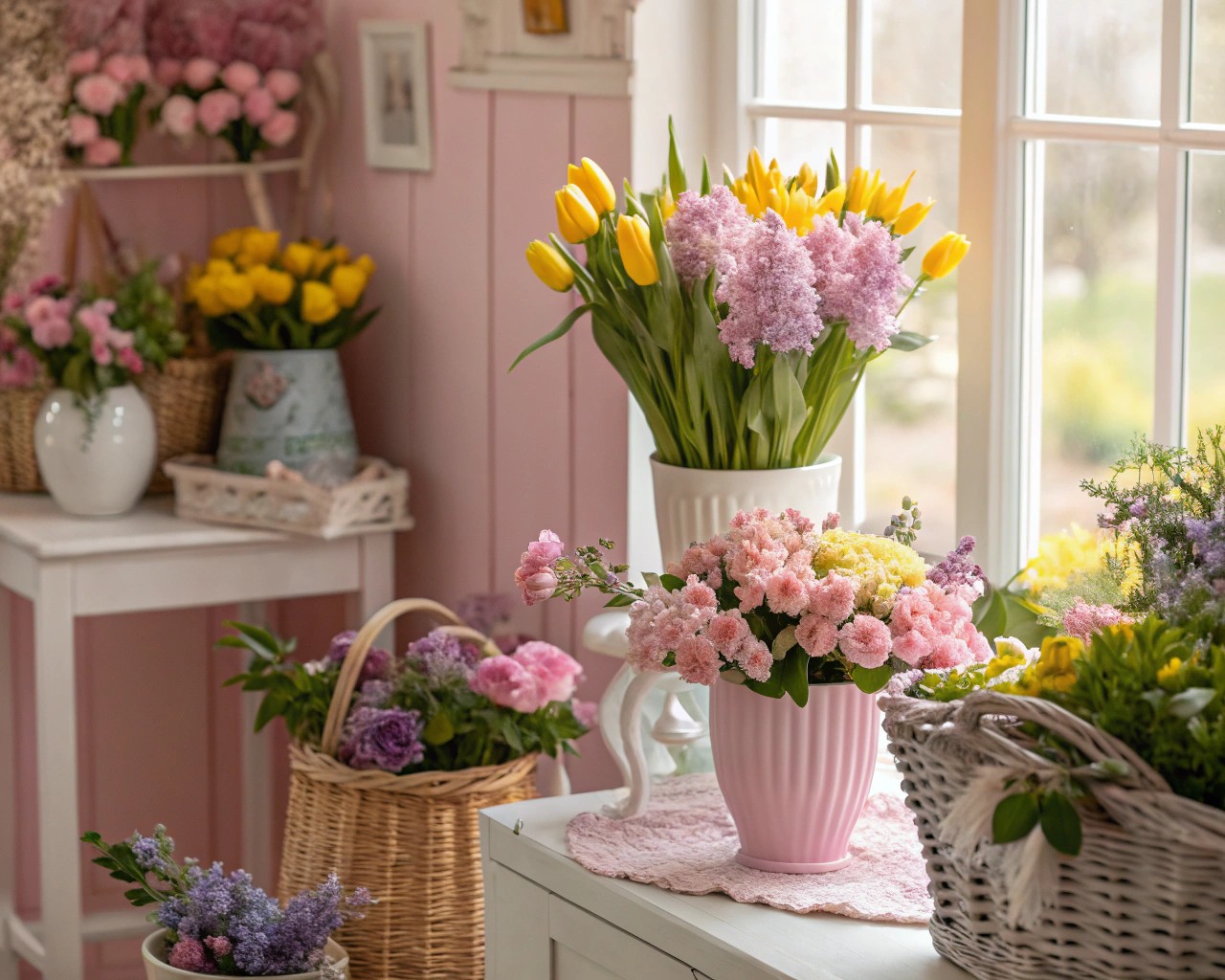
As nature awakens, our spaces should reflect renewal and fresh energy. Spring design focuses on lightening both literal and visual weight.
Color Palette
Spring’s palette embraces fresh beginnings:
- Soft pastels like mint green and pale lavender
- Fresh whites and creams as base colors
- Gentle floral hues that echo blooming gardens
Material Transitions
After winter’s heaviness, spring calls for lightening up:
- Replace heavy drapes with sheer or lightweight curtains
- Swap thick throws for cotton or linen alternatives
- Remove excess pillows and heavy textural elements
Bringing Life Indoors
Spring’s abundance offers natural decor opportunities:
- Incorporate fresh flowers in simple arrangements
- Add potted plants, especially those with seasonal blooms
- Display branches with spring buds or blossoms
Decluttering and Reorganizing
Spring naturally inspires renewal through:
- Deep cleaning and decluttering key spaces
- Rearranging furniture to create more open flow
- Cleaning windows to maximize natural light
Summer: Light, Bright and Breezy
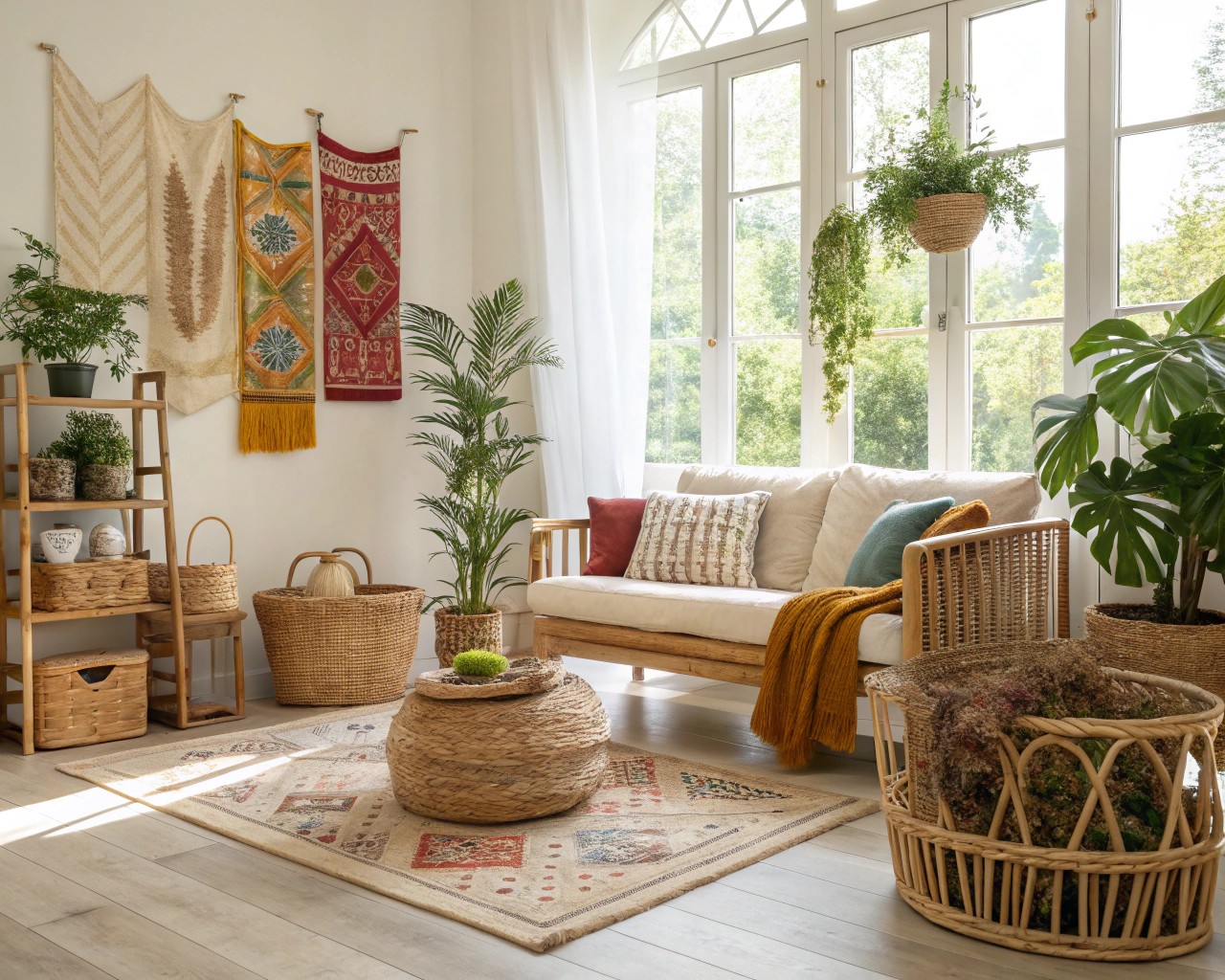
Summer design celebrates longer days and indoor-outdoor living. The focus shifts to creating spaces that feel cool, open and connected to nature.
Color Palette
Summer’s palette reflects vibrant outdoor life:
- Bright blues that echo water and sky
- Vibrant yellows and corals
- Fresh greens paired with crisp whites
Materials for Visual Coolness
Summer textiles and materials should provide both visual and physical comfort:
- Linen and cotton fabrics for upholstery and bedding
- Natural materials like rattan, bamboo, and grass cloth
- Minimal window treatments to maximize airflow
Table: Seasonal Material Selection Guide
| Season | Primary Materials | Secondary Materials | Finishes |
|---|---|---|---|
| Winter | Velvet, Wool, Faux Fur | Heavy Cotton, Flannel | Matte, Burnished |
| Spring | Linen, Light Cotton | Lightweight Wool, Silk | Semi-Gloss, Pearl |
| Summer | Lightweight Linen, Jute | Cotton, Rattan | Gloss, Natural |
| Fall | Medium Cotton, Leather | Suede, Lightweight Wool | Satin, Metallic |
Outdoor Extensions
Summer uniquely allows us to extend living areas:
- Create outdoor rooms with comfortable seating
- Add outdoor dining capabilities
- Use outdoor rugs and planters to define spaces
We recently helped a young professional couple transform their tiny balcony into a summer oasis using just three potted plants, an outdoor rug, and string lights. They told us this simple change effectively doubled their living space during the warmer months and made them feel comfortable inviting friends over to enjoy it.
Fall: Richness and Transitional Comfort

Fall design bridges summer’s openness with winter’s coziness, creating spaces that feel warm yet energized by change.
Color Palette
Fall’s palette draws from the changing landscape:
- Warm amber and golden tones
- Rich rusts and deep oranges
- Olive greens and warm browns
Transitional Textures
Fall introduces warmth without winter’s heaviness:
- Add velvet pillows to summer’s lighter upholstery
- Incorporate leather and suede accents
- Reintroduce woven throws in medium weights
Natural Elements
Fall provides abundant natural decor:
- Arrange autumn branches in tall vessels
- Display small pumpkins and gourds
- Incorporate dried botanical elements like wheat sheaves
Seasonal Accents
Simple decor shifts create significant impact:
- Switch art or photography to warmer tones
- Add metallic accents in copper and brass
- Include seasonal scents through candles or simmer pots
Creating Year-Round Garden Interest

The principles of seasonal design extend beautifully to outdoor spaces. Creating gardens with year-round appeal requires thoughtful planning.
Plant Selection Strategy
In my designs, I focus on creating four-season interest through:
- Structural elements that maintain winter presence
- Early spring bloomers that signal renewal
- Summer flowering perennials for peak-season beauty
- Fall color through foliage and late-blooming plants
Quick Reference: Seasonal Garden Focal Points
- Winter: Architectural elements, evergreens, ornamental grasses, plants with interesting bark
- Spring: Flowering trees, bulb gardens, fresh perennial growth
- Summer: Perennial beds, water features, container gardens
- Fall: Trees and shrubs with dramatic color change, ornamental berries
Client Story: The Small-Space Transformation
A young family believed their tiny urban backyard couldn’t possibly provide year-round interest. Together we selected just seven key plants with staggered seasonal moments:
- Paperbark maple (winter bark interest, fall color)
- Early crocus and daffodil bulbs (first spring color)
- Compact hydrangea (summer flowers, fall color)
- Ornamental grasses (summer texture, winter structure)
- Evergreen holly (year-round structure, winter berries)
- Late-blooming sedum (fall flowers when others fade)
- Dwarf conifer (winter structure, year-round anchor)
The family reported their surprise, having initially thought they needed dozens of plants for year-round appeal. Instead, they found they achieved something beautiful in every season with minimal maintenance through this curated selection.
Small Changes, Big Impacts: Residential Case Studies
The Urban Apartment
Client challenge: Making a small apartment feel seasonally connected despite minimal outdoor access.
Solution: We created a “seasonal shelf” in the main living area where simple elements rotate quarterly:
- Winter: A collection of white ceramic vessels with evergreen sprigs
- Spring: Forced bulbs and pastel glass containers
- Summer: Beach finds and photographs from summer travels
- Fall: Small gourds and copper accessories
Impact: The client reports that this single shelf has transformed how the entire apartment feels throughout the year, creating anticipation for seasonal changes.
The Suburban Family Home
Client challenge: Creating cohesive seasonal flow in an open-concept home with active children.
Solution: We established a seasonal color strategy using easily changeable elements:
- Dining table centerpiece that changes monthly
- Sofa pillows and throws in seasonal palettes
- Entry table vignette with seasonal natural elements
- Kitchen towels and accessories in coordinating colors
Impact: The home maintains a consistent overall design while subtly shifting with the seasons. Children eagerly participate in seasonal “switchover day.”
Quick Reference: Seasonal Change Checklists
Winter Refresh
- [ ] Add layered lighting with warm-toned bulbs
- [ ] Introduce heavy textiles in deep, rich colors
- [ ] Create cozy conversation areas
- [ ] Add scented candles with warm fragrances
- [ ] Display evergreen elements
- [ ] Protect entryways from weather elements
Spring Refresh
- [ ] Deep clean and declutter all surfaces
- [ ] Lighten window treatments
- [ ] Introduce fresh flowers and plants
- [ ] Switch to lighter textiles and brighter colors
- [ ] Reorganize furniture for more open flow
- [ ] Clean windows for maximum light
Summer Refresh
- [ ] Remove unnecessary textiles
- [ ] Introduce natural cooling elements
- [ ] Create outdoor living extensions
- [ ] Add vibrant accent colors
- [ ] Optimize for cross-ventilation
- [ ] Incorporate summer botanical elements
Fall Refresh
- [ ] Reintroduce medium-weight textiles
- [ ] Adjust lighting for earlier sunsets
- [ ] Add warm metallic accents
- [ ] Display autumn botanical elements
- [ ] Incorporate harvest-inspired decor
- [ ] Prepare entryways for weather transitions
Seasonal Color Palettes: Designer Reference Guide
| Season | Base Colors | Accent Colors | Metallic Notes |
|---|---|---|---|
| Winter | Navy, Forest Green, Burgundy | Ruby Red, Emerald, Gold | Gold, Bronze |
| Spring | Soft White, Pale Gray, Cream | Lavender, Mint, Blush Pink | Silver, Pearl |
| Summer | Bright White, Sky Blue, Sand | Coral, Citrus Yellow, Turquoise | Chrome, Silver |
| Fall | Camel, Olive, Terracotta | Amber, Rust, Deep Orange | Copper, Brass |
Small Business Seasonal Adaptations
Working with small business owners has shown me how seasonal design principles can positively impact commercial spaces too.
Café Case Study
A struggling neighborhood café saw a 30% increase in winter revenue after implementing these simple changes:
- Adding warm-toned pendant lighting over each table
- Introducing woolen throws on bench seating
- Changing wall art quarterly to reflect seasonal themes
- Creating a seasonal menu board with coordinating colors
The owner reported a significant shift in customer behavior, with people who used to grab and go now lingering for hours. They felt the space had gained a sense of intention it previously lacked.

